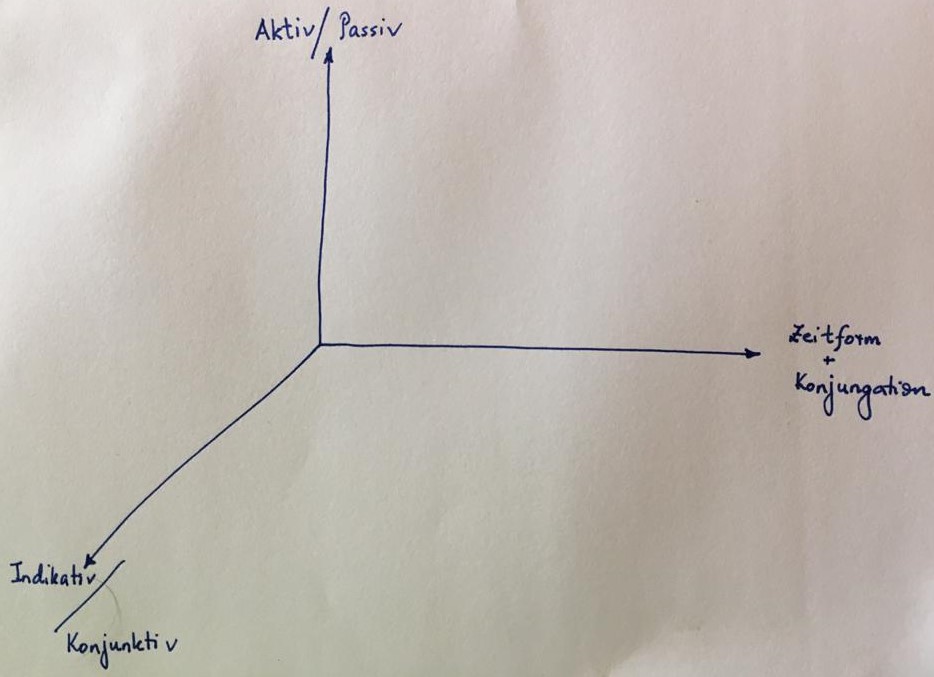To begin with today’s topic, we had to go back to the previous concept of Verb Flexion (Beugung), where we had seen the first two parameters, namely Zeitform and Konjugation. Just to brush up on these concepts –
- Zeitform (Wann?)- When did the action take place? This is further divided into 3 types –
a. Vergangenheit – Präteritum (used for formal texts, not emails) and Perfekt (used while speaking)
b. Gegenwart – Präsens
c. Zukunft – Präsens
2. Konjugation (Wer?/was?) – Who has done it? – 6 forms ,i.e., first, second and
third person (both singular and plural)
P.S.- Thank god we just have singular and plural and not dual unlike
Sankskrit. 😛
Now, let’s uncover the other two arms of the Verbflexion –
3. Activ/Passiv (Voice) – Is it from the perspective of the subject, object or the action? (More on this below)
4. Indikativ/Konjunktiv (Mood) – Whether it is real/unreal.
Any information that is real – when you introduce yourself – Indikativ
Any information that is imaginary – when you use अगर – Konjunktiv
Eg – Main teacher hoon – Indikativ
Agar main teacher hota – Konjunktiv
To better understand this concept, we need to go back to one of the topics of basic mathematics – coordinate geometry. Any given point will have 3 coordinates(in the X, Y and Z axis respectively).

This means that, all the 3 will act simultaneously on the verb.
A sentence can be Passiv as well as Perfekt, while being Konjunktiv.
Hence, to make the possible combinations, we make a table of all the possibilities, also called as the Truth Table.

Every sentence which was done in A1 was Indikativ, Activ and in Präsens tense. Then we learnt conjugation.
Every sentence from A1 – C2 will be from either of these rows.
Passiv
Passiv voice tells the story from the perspective of the object or the action.
Aktiv / Täter-perspektive – The Täter is performing an action on the objekt.
Passiv / Objekt-perspektive – The action being performed on the objekt / The objekt undergoing the action.
Here, the Täter is not important, but the action is. But why? Why is the Täter suddenly not important anymore. So the answer is, Passiv is used when the Täter of the sentence is obvious/unknown.
For example, when the crimes are reported on TV or newspaper, “A house was broken into last night”. After the culprit is found, we can say, “He committed the crime”.
If passiv is objekt perspective, we can only use the verbs with valency 2A and 3. Verbs with valency 1 is only one entity doing something. If there is just one entity, where will we keep the word camera?
A similar concept is used in all the languages, including Hindi and Marathi.
Beispiel –
Aktiv – Wir kochen im Sommer viele Mangogerichte.
Entities – Wir, Mangogerichte
Partizip II – gekocht
Helping verb – werden (to be / किया जाता है)
Passiv – Viele Mangogerichte werden in Sommer gekocht.
Hope I was able to explain the topic.
Please let me know if I’ve missed anything.
Cheers!
– Rudresh